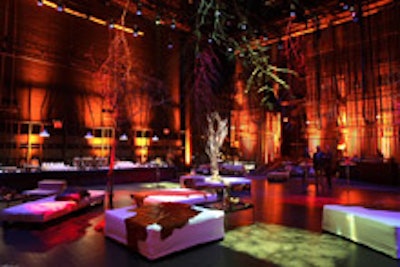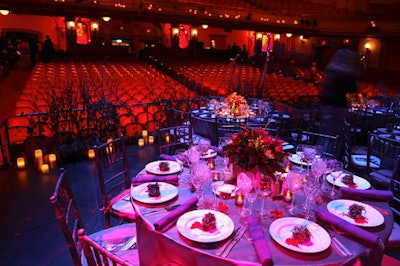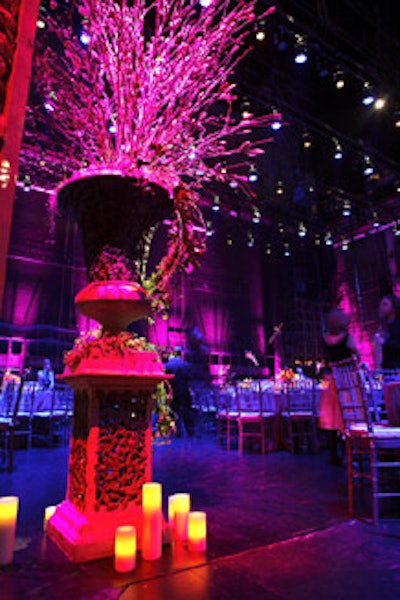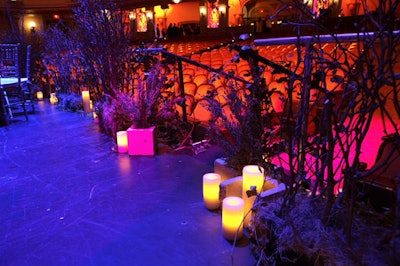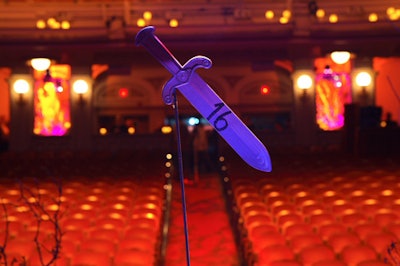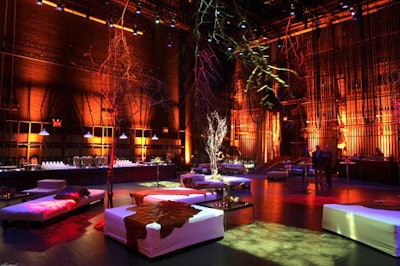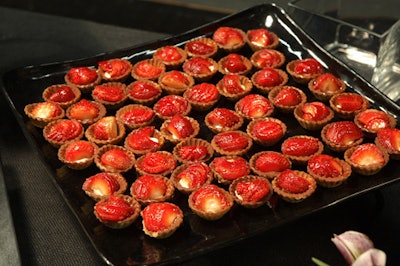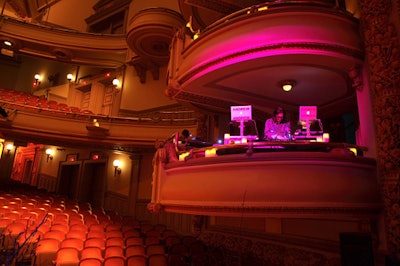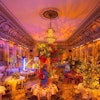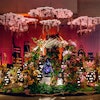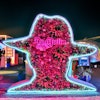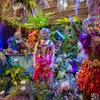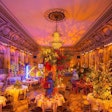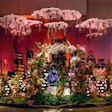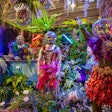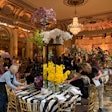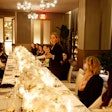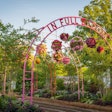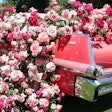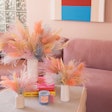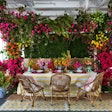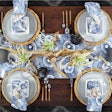Rupert Goold’s Chichester Theater Festival production of Shakespeare’s Macbeth provided visual inspiration for the Brooklyn Academy of Music's benefit at its Howard Gilman Opera House on Tuesday night. Set in an industrial chamber that BAM describes as “equally military hospital ward, kitchen, torture chamber, and abattoir,” the modernistic production also rings with what the art center calls “the echoes of Stalinist terror.” Like many of BAM's galas, the event echoed the location and the overriding themes from the play—in this case, military and murder—with creative floral details and moody lighting.
Divided into four parts, the gala included a cocktail party in the entryway of the opera house, a dinner served on the stage of the opera house, a performance of Macbeth (with Patrick Stewart in the title role) in the Harvey Theater, and a dessert reception with the cast, also on the stage of the opera house.
Bella Meyer, the owner of Fleurs Bella, who supplied floral arrangements for the evening and also oversaw all visual elements, said she was inspired by the aggressiveness of the production as well as the sexual dynamics between the production’s protagonist and his wife. Meyer also emulated (in addition to thematic elements from the play) the location of Macbeth, using trees to create a moorlike setting for the evening. The most dramatic component was a canopy of trees suspended over the stage during dessert.
Meyer and her team sourced five bare trees from upstate New York—including a witch hazel, dogwood, and sugar maple—which they had chainsawed down and delivered to the BAM stage. BAM’s stagehand crew drilled tiny holes one foot up from the bottom of each tree trunk and strung a 16th-inch cable through each. Using an eighth-inch-thick aircraft cable, the crew rigged the trees to the opera house’s fly system and hung them from above, literally suspending a forest over guests. Two more bare trees, on stands, also adorned the stage, contrasting the suspended ones; all of the wood reflected what Meyer called the play’s “upside-down world.”
Other floral elements included two 20-foot-high arrangements of magnolias and pussy willows, which stood at either side of the entrance to the stage, welcoming guests to what Meyer called a “lush, theatrical world.” The front of the stage was also decorated, emulating the moorlike feel with heather, dried leaves, and branches on the dinner tables. Meyer created centerpieces using a variety of flowers and plants, including cymbidiums, berries, herbs, and grasses, with some burgundy and poison green placed inside cinder blocks.
Lighting added to the drama of the evening. During dinner, the stage was lit Nile blue, with amber spots highlighting the centerpieces and magenta-colored lights washing the walls of the opera house. For the dessert reception, lighting on the stage was also Nile blue, this time with an orange wash; the suspended trees were each lit from above in a different color, including green, red, magenta, and orange. Scattered throughout the opera house and on the stage, pillar votive candles were intended to create a “military, castle-like feel,” according to Meyer.
The menu from Great Performances included miniature shepherd’s pie, pan-seared arctic char with red quinoa and wilted spinach, and red velvet miniature chocolate cupcakes, along with coffee and tea. During dessert, where the food was served buffet-style on a long banquet table, guests were free to lounge on ottomans and low couches or at stainless-steel cocktail and high-top tables scattered around the stage, while the pair of DJs known as Andrew Andrew did their thing.
And for those who wanted to relive—or delve further into—the evening’s performance, the gift bag included the Pelican Shakespeare version of Macbeth, published by Penguin.
